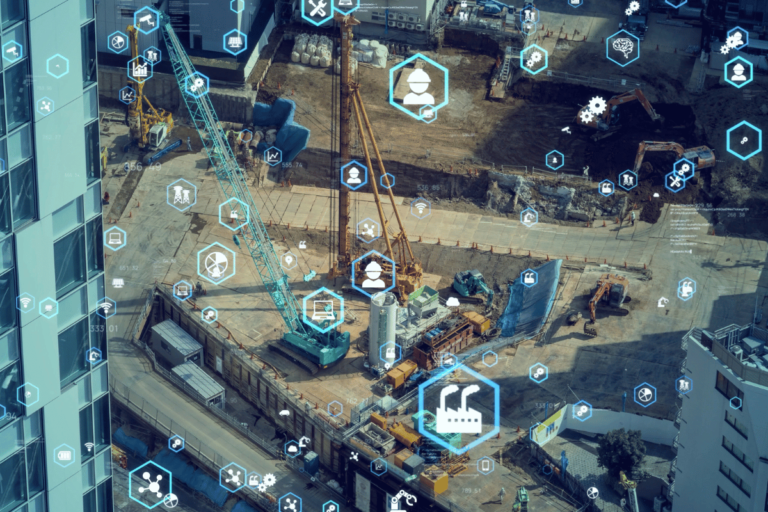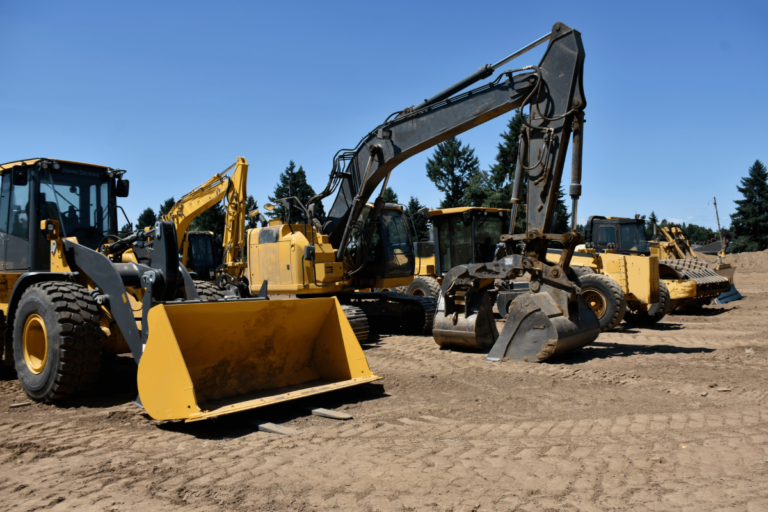The Ultimate Guide to Sustainable Construction Techniques: Building for the Future
When considering the construction of a new building, imagine the impact of incorporating features like solar panels, green roofs, and rainwater harvesting systems. These elements are just the beginning of what sustainable construction entails. By exploring innovative methods and materials, you can notably reduce your carbon footprint and contribute to a greener future. Discover how sustainable architecture and energy-efficient design strategies can revolutionize the way we build for generations to come.
Key Takeaways
- Implement passive solar design for natural heating and cooling.
- Use eco-friendly building materials like bamboo and cork.
- Incorporate high-performance insulation materials for energy efficiency.
- Integrate smart technology for efficient energy management.
- Prioritize waste reduction and recycling practices.
Importance of Sustainable Construction
Sustainable construction plays a pivotal role in reducing environmental impact and promoting long-term viability in the built environment. Sustainable architecture is a key aspect of this construction approach, focusing on designing buildings that minimize negative effects on the environment while enhancing the well-being of occupants.
By incorporating eco-friendly practices and materials, sustainable architecture aims to create structures that are energy-efficient, resource-efficient, and environmentally responsible.
When considering the environmental impact of traditional construction methods, sustainable construction offers a more sustainable alternative. Conventional buildings contribute significantly to carbon emissions, water pollution, and waste generation.
In contrast, sustainable architecture prioritizes reducing energy consumption, utilizing renewable resources, and minimizing waste production. These practices benefit the environment, lead to healthier indoor spaces, and lower operational costs over the building’s lifespan.
Eco-Friendly Building Materials
Utilizing environmentally conscious building materials is imperative for reducing the ecological footprint of construction projects. When choosing eco-friendly materials, consider options that are carbon neutral, made from recycled materials, biodegradable, and sourced from renewable resources.
- Carbon Neutral Options: Select materials that have a low carbon footprint or offset the emissions they produce during manufacturing and transportation. Examples include hempcrete, straw bale, and cork.
- Recycled Materials: Incorporate materials that have been repurposed from waste products, such as recycled steel, reclaimed wood, and recycled glass. These materials help reduce landfill waste and promote sustainability.
- Biodegradable Choices: Opt for materials that can naturally decompose without releasing harmful substances into the environment. Examples include bamboo, wool insulation, and linoleum flooring.
- Renewable Resources: Choose materials that are sourced from rapidly replenishing or regenerating sources, like bamboo, cork, and responsibly harvested timber. These materials help preserve natural resources and support long-term environmental health.
Energy-Efficient Design Strategies
Consider implementing energy-saving design strategies to optimize the performance and sustainability of your construction project.
Passive solar design is a key technique that utilizes the sun’s energy to heat and cool a building naturally. By strategically placing windows, using thermal mass materials, and incorporating shading devices, passive solar design can greatly reduce the need for artificial heating and cooling systems.
In addition to passive solar design, proper insulation techniques play an essential role in enhancing energy efficiency. Effective insulation helps to minimize heat transfer through walls, floors, and roofs, reducing the energy required to maintain a comfortable indoor temperature. Utilizing materials with high R-values and ensuring a continuous insulation layer can prevent thermal bridging and improve the overall energy performance of the building.
Green Building Certifications
Enhancing the sustainability of your construction project can be achieved through obtaining green building certifications. These certifications are a reflection of your commitment to incorporating sustainable practices into your construction projects. By undergoing the certification process, you can showcase your dedication to environmentally friendly building practices and differentiate your project in the market.
- LEED Recognition: Recognized globally, it focuses on energy efficiency, water conservation, and indoor air quality.
- BREEAM Recognition: Emphasizes sustainable design, construction, and operation.
- Green Globes Recognition: Provides a flexible and affordable pathway to certification.
- Living Building Challenge: Regarded as one of the most rigorous certifications, it promotes regenerative design principles.
Each certification process involves rigorous assessments and compliance with specific criteria related to sustainable construction. It requires detailed planning and execution to meet the standards set by these certifications.
Waste Reduction and Recycling
Efficient waste management practices play an essential role in sustainable construction projects by minimizing environmental impact and promoting resource conservation. Waste management involves the collection, transportation, and disposal of construction waste in an environmentally responsible manner. Sustainable practices focus on reducing waste generation, reusing materials, and recycling whenever possible to lessen the burden on landfills and natural resources.
To effectively implement waste reduction and recycling solutions in construction projects, consider the following strategies:
| Waste Management | Sustainable Practices | Recycling Solutions |
|---|---|---|
| Conducting waste audits to identify sources of waste | Using prefabricated materials to minimize on-site waste | Setting up designated recycling areas |
| Implementing a waste management plan | Employing deconstruction techniques to salvage materials | Partnering with local recycling facilities |
| Training staff on proper waste segregation | Incorporating modular construction methods | Investing in equipment for material separation |
| Utilizing compaction equipment for waste volume reduction | Opting for recycled or reclaimed materials | Encouraging suppliers to use eco-friendly packaging |
Innovative Construction Technologies
You can enhance sustainability in construction by prioritizing eco-friendly materials selection. Opt for materials with low environmental impact throughout the building process to reduce carbon footprint.
Additionally, integrating energy-efficient building systems can further contribute to the overall sustainability of the project.
Eco-Friendly Materials Selection
Utilizing cutting-edge innovative construction technologies allows for the strategic selection of eco-friendly materials, promoting sustainability in the construction industry.
When pondering eco-friendly options for material sourcing, it’s essential to focus on sustainable construction and make green choices.
Here are four key factors to contemplate when selecting eco-friendly materials:
- Recycled Content: Opt for materials with a high percentage of recycled content, such as recycled steel or reclaimed wood, to reduce the demand for new resources.
- Renewable Resources: Choose materials derived from rapidly renewable resources like bamboo or cork, which have a shorter replenishment cycle compared to traditional materials like hardwood.
- Low VOC Products: Select materials with low volatile organic compound (VOC) emissions to improve indoor air quality and reduce harmful off-gassing in buildings.
- Life Cycle Assessment: Conduct a life cycle assessment to evaluate the environmental impact of materials from extraction to disposal, ensuring a holistic view of their sustainability.
Energy-Efficient Building Systems
When implementing energy-efficient building systems in construction projects, it’s important to integrate innovative technologies that optimize resource utilization and reduce environmental impact.
Passive solar design is a key concept in energy-efficient building systems. By strategically positioning windows, walls, and floors to maximize sunlight exposure in winter and minimize it in summer, passive solar design reduces the need for artificial heating and cooling.
Insulation techniques play a key role in maintaining energy efficiency within a building. High-performance insulation materials such as spray foam, cellulose, or rigid foam boards can greatly reduce heat transfer, keeping the interior temperature stable and reducing the workload on HVAC systems.
Additionally, proper air sealing to prevent drafts and thermal bridging is essential for maximizing the effectiveness of insulation.
Future Trends in Sustainable Construction
As you explore the future trends in sustainable construction, consider the utilization of innovative eco-friendly materials to reduce environmental impact.
Look into energy-efficient building designs that optimize resources and minimize energy consumption.
Additionally, investigate smart technology integration to enhance building performance and sustainability efforts.
Innovative Eco-Friendly Materials
In the field of sustainable construction, the exploration of innovative eco-friendly materials is crucial to shaping future trends in the industry. Incorporating biodegradable concrete and sustainable insulation can significantly decrease the environmental impact of buildings. By using recycled plastic in construction, you contribute to waste reduction while creating durable and eco-conscious structures.
Bamboo construction offers a renewable alternative that’s both strong and aesthetically pleasing. These materials not only help in lowering carbon footprints but also promote a circular economy by utilizing resources efficiently.
Biodegradable concrete, for instance, breaks down over time, reducing landfill waste and minimizing pollution. Sustainable insulation materials provide energy efficiency, contributing to reduced heating and cooling costs in buildings. Embracing recycled plastic and bamboo construction showcases a commitment to sustainability, pushing the construction industry towards a greener and more responsible future.
Energy-Efficient Building Designs
Implementing energy-efficient building designs is pivotal in shaping the future trends of sustainable construction, ensuring reduced energy consumption and environmental impact.
Passive solar design is a key strategy that maximizes the use of natural light and heat from the sun to reduce the need for artificial lighting and heating. By strategically placing windows, skylights, and thermal mass materials, passive solar design can notably decrease energy usage.
In addition to passive solar techniques, proper insulation plays a vital role in enhancing energy efficiency within buildings. Effective insulation techniques, such as using high-performance materials like spray foam or cellulose insulation, help in maintaining a consistent indoor temperature, reducing the reliance on heating and cooling systems.
Insulation also aids in preventing heat loss during colder months and heat gain during warmer periods, thereby optimizing energy usage throughout the year.
Smart Technology Integration
Utilizing cutting-edge smart technology in sustainable construction offers a transformative approach towards enhancing building efficiency and environmental sustainability. Incorporating smart automation systems allows for precise control over energy usage, optimizing operations to reduce waste and promote energy savings.
Digital construction tools further streamline the building process, enabling real-time monitoring and adjustments that contribute to overall efficiency and sustainability. These advancements not only benefit the occupants of the building but also have a significant positive impact on the environment by minimizing resource consumption and reducing carbon footprint.
By integrating smart technology solutions, construction projects can achieve higher levels of energy efficiency and lower environmental impact, aligning with the growing demand for sustainable practices in the industry.
- Smart automation for efficient energy management
- Integration of digital construction tools for real-time monitoring
- Energy-saving practices through smart technology implementation
- Reduction of environmental impact through smart construction techniques
Conclusion
To sum up, you now possess the ultimate guide to sustainable construction techniques for building a greener future.
By implementing eco-friendly materials, energy-efficient designs, and innovative technologies, you’re on the path towards creating environmentally conscious buildings that prioritize sustainability.
Keep up the good work in reducing waste, increasing efficiency, and staying ahead of future trends in sustainable construction.
The future of construction is in your hands. Keep building, but make it sustainable.







